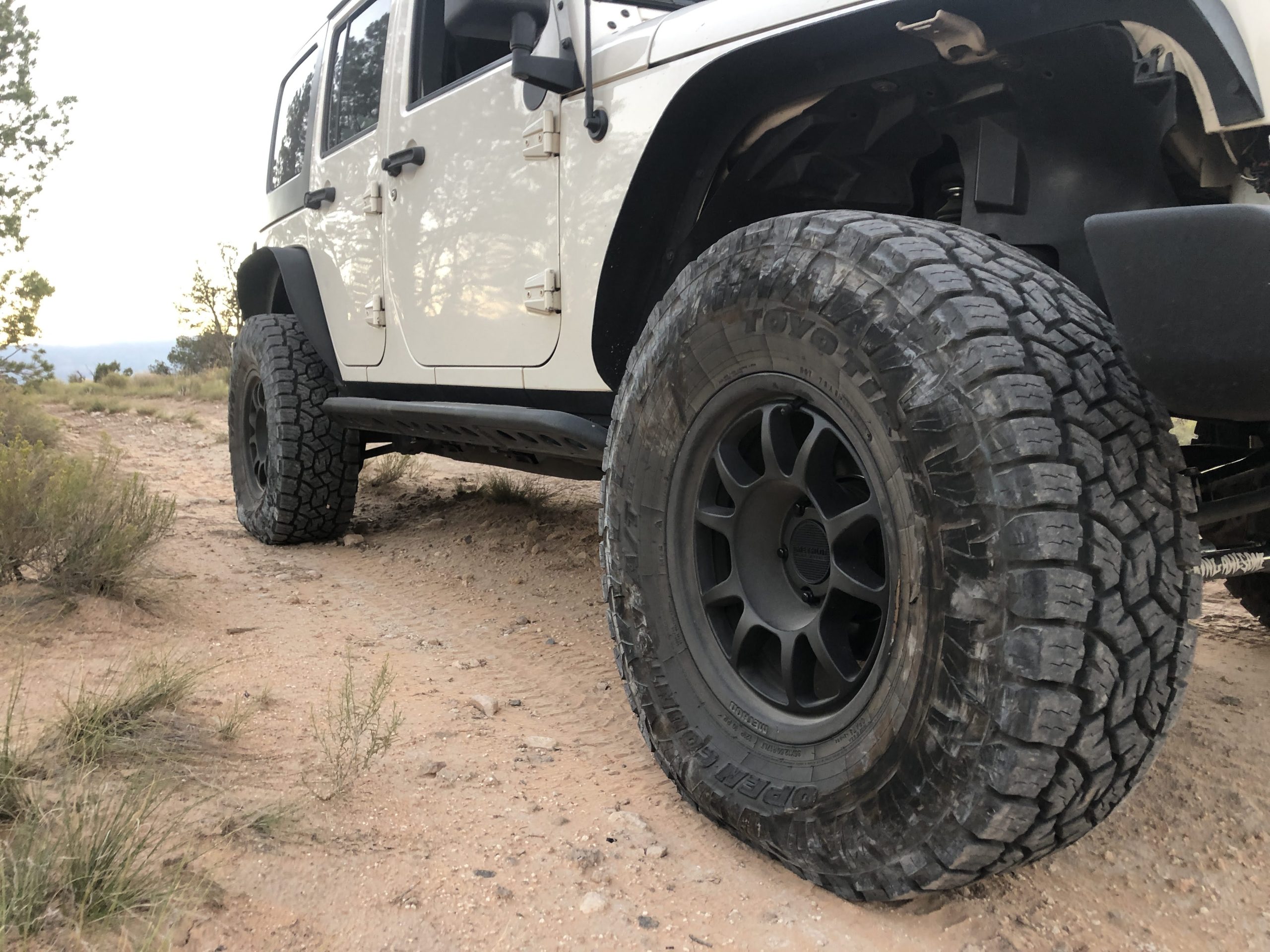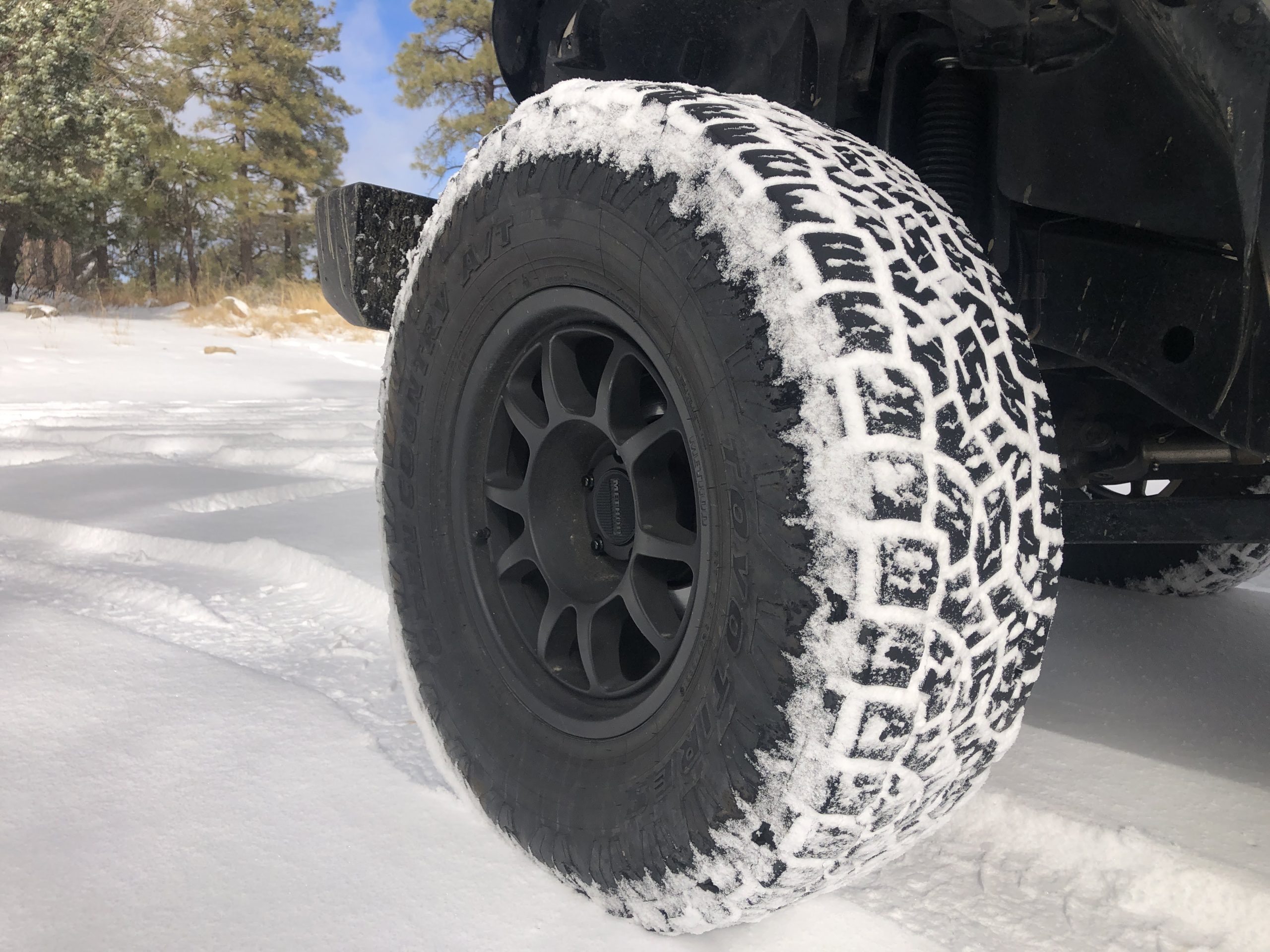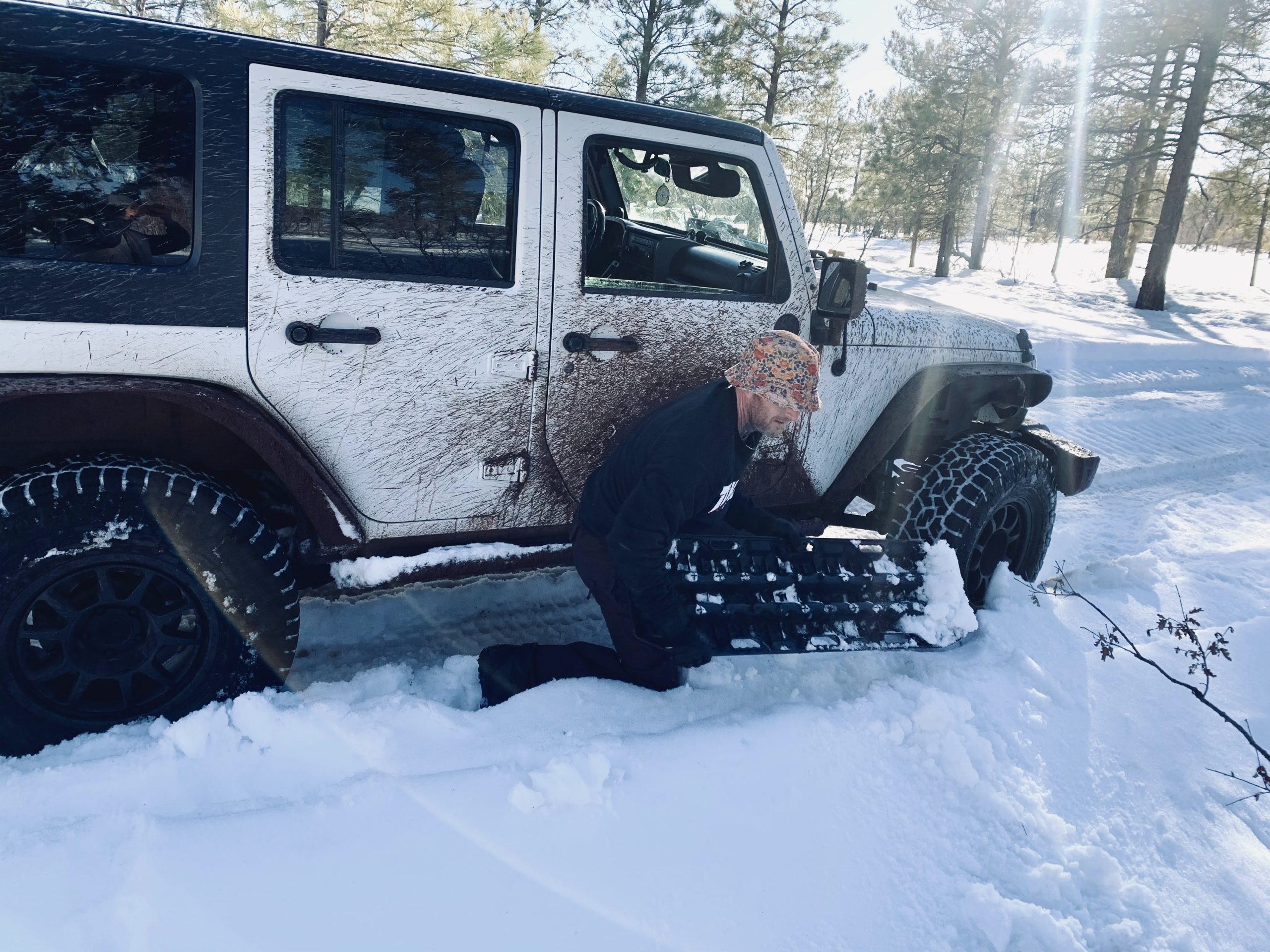I have always believed that a person’s shoes are the building blocks of their personal gear. This is a perspective based on form and function. If your shoes look good and can perform, it matters less how your pants look or what logo lives on your shirt. The same goes for the shoes that my Jeep Wrangler wears.
I prefer running a 35×12.5R17 tire on my JKU for a larger diameter and greater contact surface. Recently, I installed the Toyo Open Country AT/III, which has an overall diameter of 34.5 inches, a polyester 2-ply construction, a tread depth of 16.9/32 inches, and a max load rating of 3,195 pounds. The AT/III also has stone-ejecting tapered blocks and is mountain/snowflake rated. As far as appearance, this Open Country has just the right amount of aggressiveness, as well as a level of sophistication that gives the Jeep just the right look.
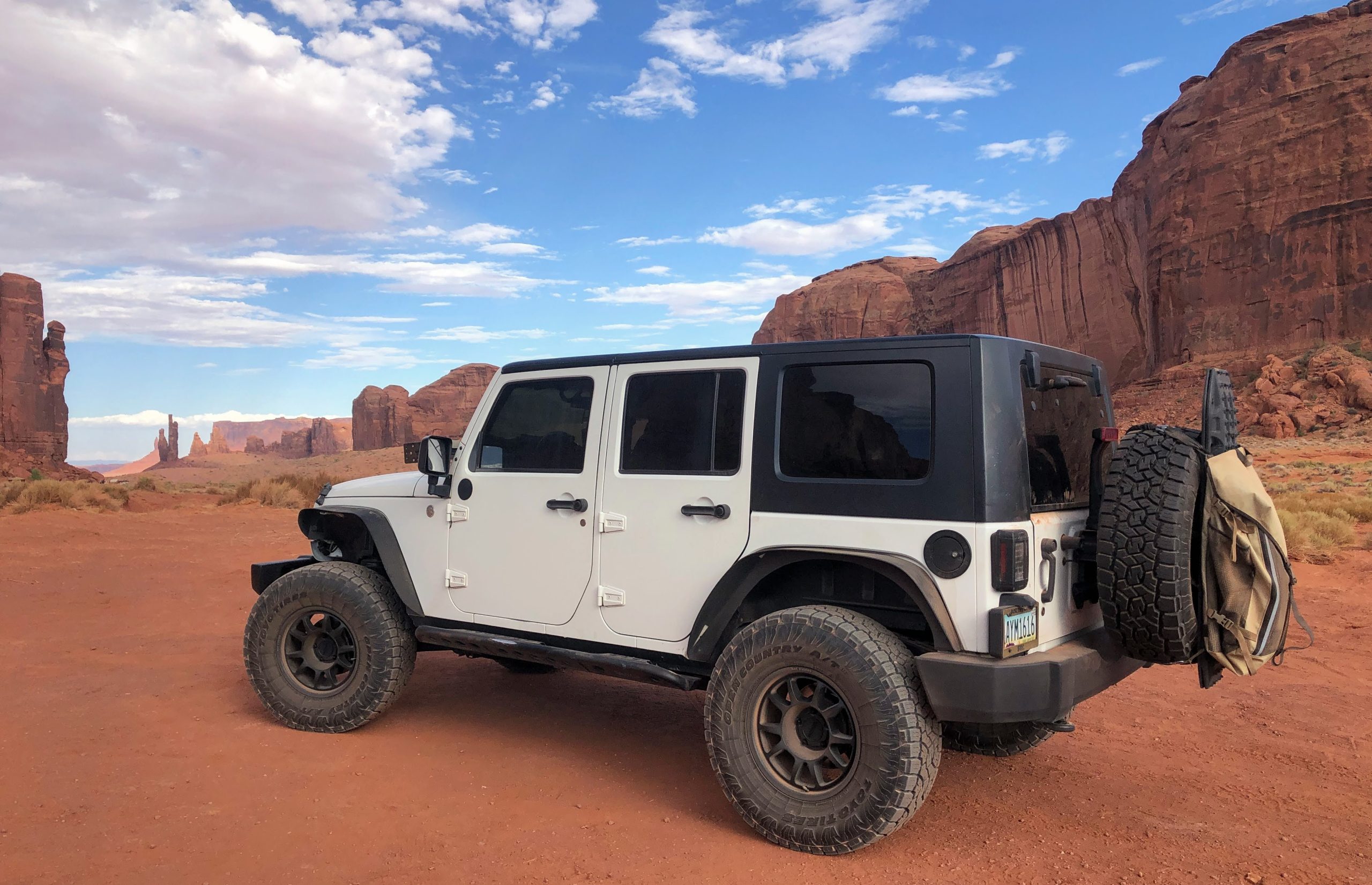
On-road Performance
On the highway, the AT/III produces zero noise (i.e., the Jeep itself is louder than the tires). I have been running mud-terrain tires since day one, and the contrast in noise level is a relief. On open highways, the ride is smooth and controlled. We completed a four-hour, 240-mile trek to Lone Rock Beach in comfort rarely found in a Wrangler, including communicating with my navigator and maintaining radio communication without the dreaded use of “Say again your last?” During the Arizona summer months, extreme torrential downpours brought on by our beautiful monsoon season are not uncommon. In some areas, there can be over a foot of standing water. I navigated these obstacles easily and never felt the tires lose traction on wet asphalt.
Performance in Sand
On a recent family camping trip, we landed in the Lone Rock region of Lake Powell. We spent four days in the scorching 106° sun, engulfed in sand and water. As a standard operating procedure, we run the tires of our JKU between 28-32 psi for daily driving use. I decided to push those high pressures in extremely fine sand—the sand at Lone Rock is like driving in a bowl of cinnamon and sugar. After a little over 500 yards, we found ourselves stuck for the first time. We tried reversing out with no success. At this point, I dropped the pressure of the AT/IIIs to 20 psi and engaged 4L to recover from the situation. Once free, the JKU stayed in 4L for the duration of the trail.
Aired down a little bit, AT/IIIs traversed nearly every inch of Lone Rock Beach in the powdery sand with zero problems. Ascending the dunes was done with minimal effort, and descending the Sahara-like terrain features. We also recovered three stuck 4WD vehicles, including a brand-new Grand Cherokee.
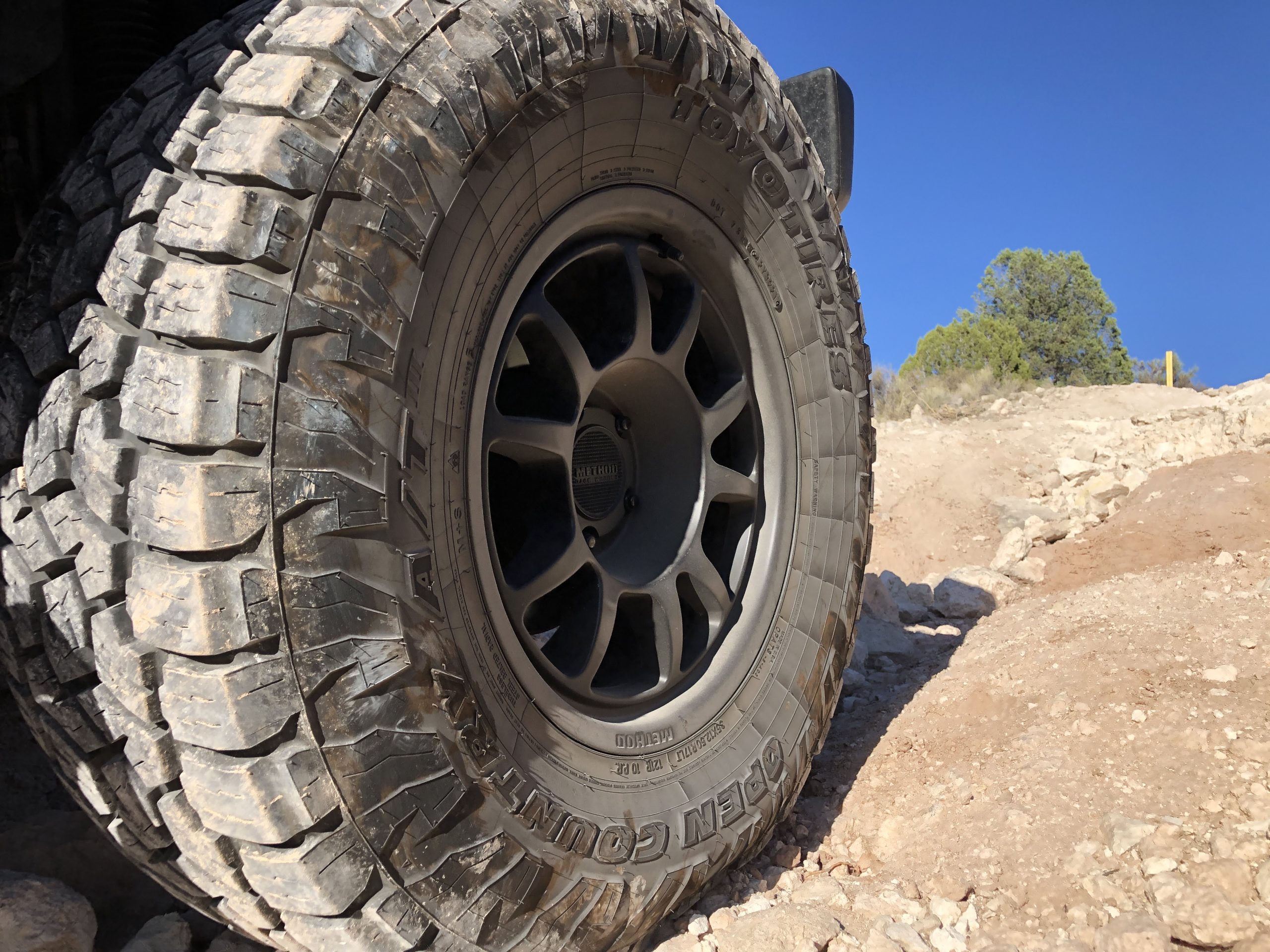
Off-road Performance
The AT/IIIs are a total workhorse in technical Arizona terrain. Graded trails are smooth as butter with a highway pressure of 28 psi. Recently, on one of our filming excursions on a stretch of trail Google Maps refers to as “Skeleton Bone Gulch,” we encountered a downed vehicle. We shifted the Wrangler into 4L and aired down to 10 psi to start the recovery. Inch by inch, the Jeep pulled the stranded truck through the treacherous terrain. The Toyos gripped well and eventually fought their way to victory. They have given me confidence in every type of terrain that I have driven, and so far, they have proven remarkably durable.
Snow and Ice Performance
With the winter months approaching, I looked forward to getting the AT/IIIs into the snow both on- and off-road. Winter conditions, in my opinion, are the best for testing a tire and its performance. In one test, at 30 psi in 4×4, the AT/IIIs handled smoothly and had first-rate traction on roughly 3-4 inches of packed snow. After accelerating to 25 mph, I applied the brakes and observed limited sliding on the slippery surface of the trail.
Record snowfall pummeled central Arizona the second week of February. My friend Porter and I packed the Wrangler, grabbed coffee and sandwiches, and pushed north toward Williams for some backcountry snowboard adventures. In search of untouched powder, we navigated trails and backroads, encountering no other humans. We had been eyeing a line on Bill Williams Mountain and were searching for a route to get us close enough to traverse the over-knee-high snow on foot.
We pushed about 200 yards on what I believed was an already packed trail; however, the tracks were that of snowmobiles, and there was soft snow underneath. Once stuck, it was time to air down and begin recovering the Jeep; these situations are my favorite to test recovery skills and the tires. I had only two MaxTrax recovery boards that we placed in opposition to the front and rear wheels. It took some digging and leapfrogging, but eventually, we successfully placed the Jeep back on the road. Tire pressures in the front were aired down to as low as 4 psi, with the rear tires between 10 and 14 psi.
As we drove roughly seven miles to Williams, I could feel the front tires barely hanging on. I maintained low speeds and slowed to nearly a stop on curves. We successfully made it to a filling station and aired the tires up to road pressures, laughing in disbelief that we had made it. Toyo has done an outstanding job with their AT/III tire, aided by my bead-lock Method Race Wheels 702 rims.
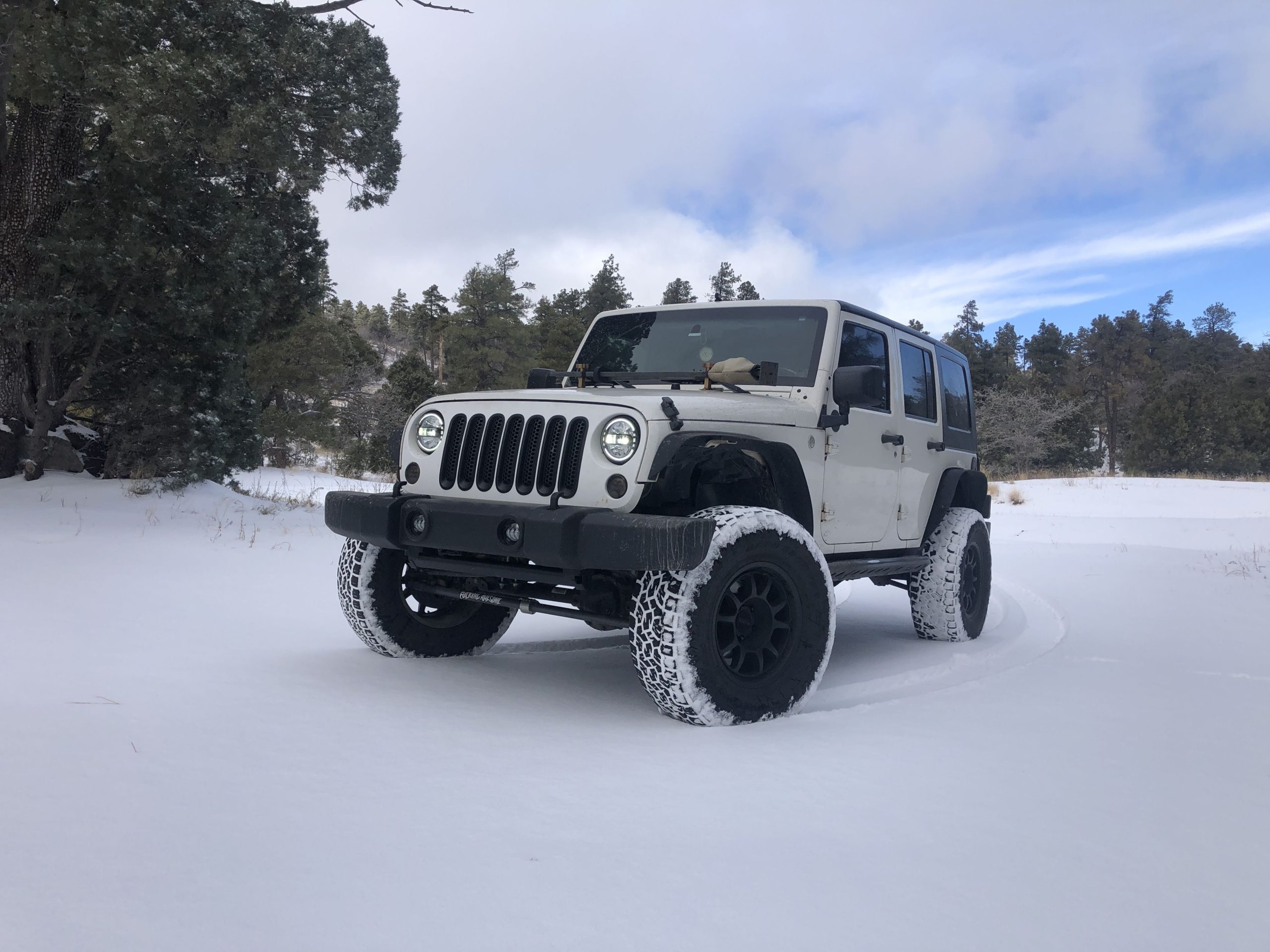
Conclusions
I have used various brands and styles of tires, and I highly recommend the Toyo Open Country AT/IIIs. Hands down, these have become my favorite tire for all-purpose and extreme use. If you explore the elements and push the limits of your rig in remote areas, then this tire will not leave you dissatisfied. Where no one is coming to save you, the quality of your gear and the size of your experience will.
$392 for 35×12.5 R17 | toyotires.com
Our No Compromise Clause: We carefully screen all contributors to ensure they are independent and impartial. We never have and never will accept advertorial, and we do not allow advertising to influence our product or destination reviews.


